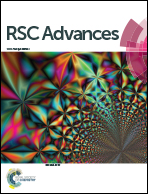In vitro and in vivo toxicology of bare and PEGylated fluorescent carbonaceous nanodots in mice and zebrafish: the potential relationship with autophagy†
Abstract
Fluorescent carbonaceous nanodots (CDs) are suitable for biomedical applications owing to their excellent photoluminescence properties. However, their toxicity has not been sufficiently evaluated. In this study, we demonstrated that both CDs and PEGylated CDs (PEG-CDs) displayed low cytotoxicity to several cell lines with a concentration as high as 1 mg mL−1, and that autophagy might be involved in the cytotoxicity. In vivo, continuous administration of CDs or PEG-CDs showed no significant alteration on the hematology, blood biochemistry indexes and cell morphology of the main organs. In a zebrafish embryo model, CDs led to a considerably higher mortality and abnormality frequency than PEG-CDs, which demonstrated that PEGylation could decrease the toxicity of CDs. In conclusion, CDs displayed low systemic toxicity but considerable developmental toxicity, and PEGylation could reduce the toxicity, while autophagy may be involved in the toxic mechanisms of the CDs and PEG-CDs. Thus, our studies were exceedingly encouraging and provided some possibility for the clinical application of CDs, while developmental toxicity should be paid much more attention when evaluating the toxicity of nanomaterials.


 Please wait while we load your content...
Please wait while we load your content...